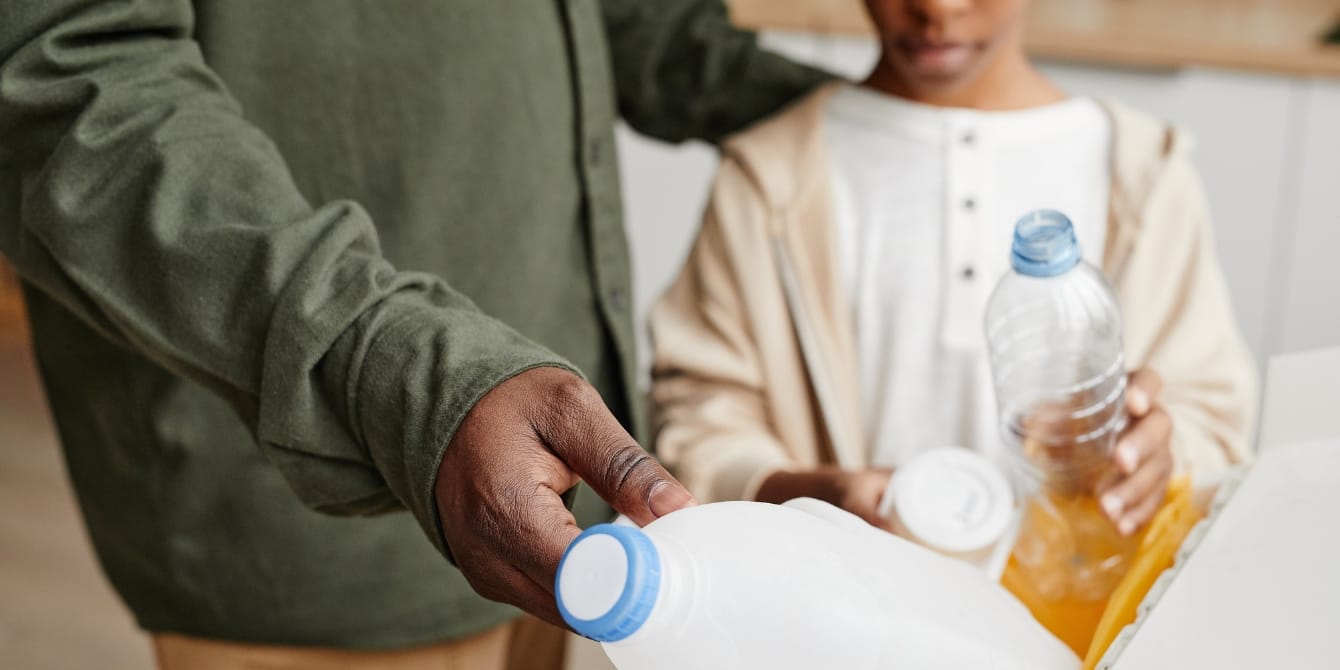7 daily habits to foster sustainable parenting

SeventyFour/Shutterstock
Many parents are setting out to raise their little ones with a side of sustainability. These daily habits can wield a super-sized impact on shrinking your family's footprint.
Table of Contents
This story was written by Riley Baker and originally appeared on Brightly.
Parenthood—with all its messes, meltdowns, and magic moments—is an incredible journey. But these days, it’s not just about diapers and daycare; it’s also about being eco-savvy.
In an era where planet Earth could use a little extra TLC, many parents are setting out to raise their little ones with a side of sustainability. The good news? You don’t have to be an eco-warrior to make a difference. Small changes in your daily routine can wield a super-sized impact on shrinking your family’s carbon footprint while gifting a healthier planet to the next generation.
Sustainable parenting isn’t about turning your life upside down; it’s more like a gentle eco-nudge in the right direction. So grab your reusable coffee mug and dive into these daily habits that’ll help you parent like a sustainable rockstar.
7 Daily Habits for Sustainable Parenting
1. Make small tweaks to your meals
There are so many small changes you can make that up the sustainability of your family’s daily meals. Start buying more local and seasonal ingredients, reduce meat consumption, and incorporate more plants into your dishes.
2. Always turn off the lights when you leave a room
Teach your kiddos to turn off the lights (and appliances!) when not in use from an early age. As they get older, doing so will become second nature, saving the planet and money on the monthly electric bill.
3. Resist the urge to click “add to cart”
Instead of instantly adding something to your Amazon cart, consider whether you can shop for that item secondhand instead. Kids grow fast, and their needs change frequently. Whether it’s kids’ clothing or home essentials, thrift stores, consignment shops, and online marketplaces offer a wide range of gently-used items that can save you money and reduce your family’s environmental impact.
4. Encourage active transportation
Whenever possible, ditch the car and choose to walk, bike, or use public transportation. Aside from reducing greenhouse gases, it’s a fun bonding experience, encourages physical activity, and can deepen a child’s connection to the environment. Simply walking or biking to school together is a great place to start.
5. Take shorter showers
Considering a shower with a low-flow showerhead uses 25 gallons of water every 10 minutes, even slightly cutting down that time can make an impact. Encourage your family to take shorter showers by turning it into a game. Set a waterproof timer, and keep track of everyone’s times. Whoever takes the shortest showers each week gets a fun reward.
6. Set up a family recycling center
Create a designated area in your home for recycling bins and make it a family responsibility to sort and recycle items properly every day. Teaching your children what can and cannot be recycled in your local area will keep more waste out of landfills.
7. Foster a culture of reuse
Encourage your children to use both sides of the paper for drawing and writing, and keep a scrap paper pile for doodles and crafts. Speaking of crafts, see what can be upcycled around your home before buying something new from the store. When you teach children the importance of reusing and repurposing items from a young age, you empower them to become eco-conscious, resourceful individuals throughout their lives.
This story was written by Riley Baker and originally appeared on Brightly.


































